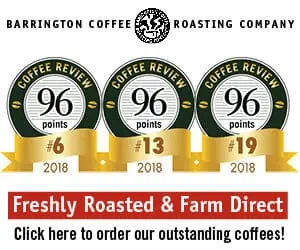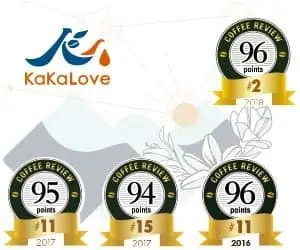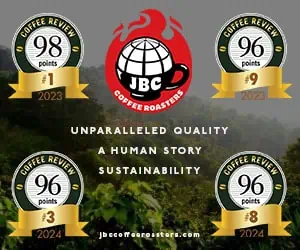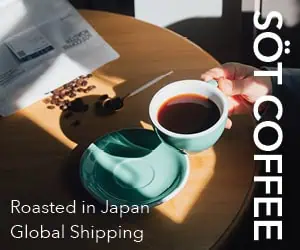You walk into a cafe. Ominously empty. Hopper’s Nighthawks, except it’s eleven o’clock in the morning. Deep down you know no one has ordered coffee for the last two hours. With noirish resolution you consider the options: urn coffee that has stewed so long flavor is a remote memory, or an espresso, which at least will be fresh. Then you peer past the barista’s bicep tattoos with dull resignation as either: 1) three ounces of tasteless brown water gushes into the cup faster than you can say “I wanted it short,” or 2) blackish, bitter, overextracted stuff oozes out of the portafilter drop by painful drop.
Most espresso is brewed so badly in North America that it’s hard to even think about the quality of the coffee that was sacrificed to the process in the first place. The considerable energy of the North-American coffee establishment has been taken up by the task of improving brewing standards. Given the scope of that challenge, nobody besides the roasters has paid much attention to the coffee itself. How good are the green coffees that go into espresso blends? Are they appropriate for espresso brewing? Which makes for better espresso, very dark roasts a la the American West Coast or the medium-dark styles generally favored in Italy? Are the very dark West-Coast-style roasts harsh and carbony or do they preserve some genuine coffee character?
These were some of the questions that prompted this tasting. However, once we decided to systematically sample espresso blends we were faced with the question of how to do it.
Our regular cuppings at Coffee Review follow the well-established procedure used by almost all North-American coffee professionals. Shouldn’t espresso be evaluated as espresso, however, rather than sampled via standard cupping procedure like drip coffee? If so, how do you mindfully taste eleven dense, syrupy samples of espresso in a row without risking espresso build-up, a sort of deadening crema fuzz on the palate? And what about the fact that most Americans take their espresso combined with hot milk? Do we pretend that everyone is a short-shot purist?
I consulted with a group of espresso experts meeting at a recent “Espresso Summit,” a symposium sponsored by the Specialty Coffee Association of America. Based on those conversations I came up with the following rather elaborate three-stage procedure. Step one, study the crema (the fine layer of froth that tops a well-made espresso) and sample the aroma of a straight shot (1 1/2 ounces). Second step, taste a single shot combined with 2 1/2 ounces of hot water. Third, taste a single shot combined with 2 1/2 ounces of whole milk steamed to approximately 150F but not frothed.
The co-owner and morning barista from one of the better aficionado caffes in Northern California (Betsy Lazaroff of Caffka, Oakland, California) pulled the shots using a well-tuned machine and carefully calibrated grinder.
I’ve been cupping coffees using conventional procedures for more than twenty years, but because this was a new approach for me, I asked the other co-owner of the caffe, Pauline Lim, to taste with me and maintain a separate set of scores and notes as check and precaution. We sampled the coffees completely blind, starting with the lightest roast and ending with the darkest. We scrupulously avoided talking or exchanging notes during the tasting.
Our scores, though different, reflected almost perfectly parallel assessments. In other words, Pauline’s high scores, low scores and mid-range scores exactly paralleled mine (with one exception, noted in the ratings). Of course, the fact that we agreed doesn’t necessarily make us right (whatever “right” means in something as potentially subjective as sensory evaluation), but it does mean that I probably wasn’t working in a state of complete delusional projection. Although I carefully considered Pauline’s notes, the final scores recorded here are entirely mine.
I hope that I’ve convinced everyone patient enough to read this far that I pursued this exercise with appropriate deliberation and care.
That being said, I think our procedure could use improvement. I’m particularly concerned about the assessment of body (the sensation of weight in the mouth). In theory one should be able to read body with a diluted shot, but I had difficulty doing so. In the future I’d like to add a fourth, follow-up element to the procedure that involves tasting another straight shot, undiluted, with a fresh palate.
Finally, all procedural issues aside, what’s the punch-line with the coffees?
None of these blends seemed significantly flawed. None displayed the ferment or similar defects I occasionally have tasted in other blends. None of the very dark-roasted coffees were disturbingly burned, harsh, raw, thin or sharp. In fact, one of the darkest-roasted coffees in the tasting also read as one of the most complex. The lighter-roasted blends preserved appropriately discreet hints of acidity and fruit without throwing the round, sweet tones of a good espresso out of balance. A couple of the lighter-roasted blends faded a bit in milk, but they apparently were intended by their blender-roasters as straight-shot espressos.
Given the poor quality of certain other espressos I’ve tasted, I would say that even the blends that scored a bit lower in these ratings are superior coffees. I have drunk espresso made with both Illy coffee and Peet’s Major Dickason’s blend with the most intense pleasure, yet both came in somewhere in the middle of the pack. In a crowded airport I recently had a straight shot of Illy that rang on my palate for two hours afterwards and probably constituted the finest moment of my admittedly rather dismal travelling day. It’s difficult for me to reconcile that almost transcendent recollection with the reading of the coffee I made for this tasting.
Perhaps the answer is that coffee is a moment in time as well as a beverage. And that any of these eleven coffees, brewed right, is capable of transforming a leaden airport moment into a tiny yet luminous epiphany.










